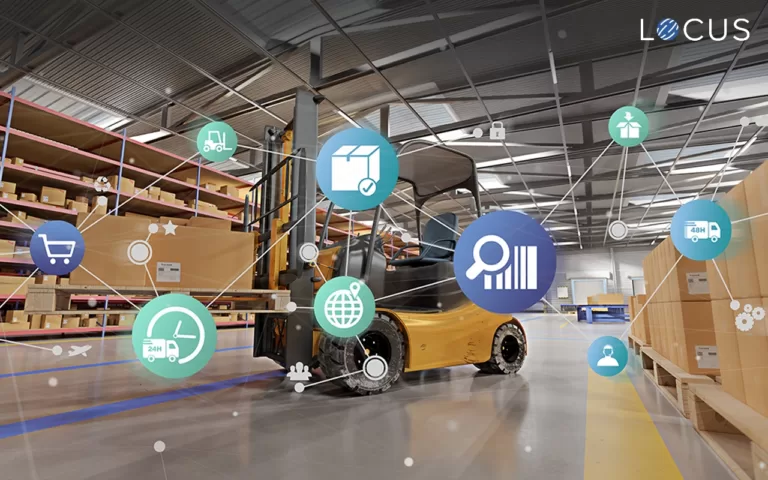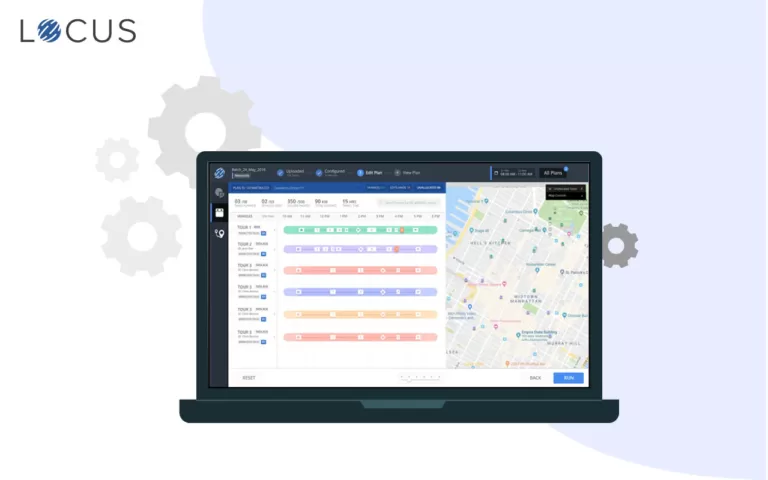Last Mile Delivery Optimization, Route Optimization
COVID-19 : Time to Zone out
May 18, 2020
5 mins read

Ever since the global community took note of the COVID-19 transforming into a pandemic, enforced social distancing or lockdowns have been a consistent reaction from every Government (barring rare exceptions like Sweden). The severity of the lockdown has varied from recommendations to stay indoors to military enforced mandatory restrictions on any movement deemed non-essential. India, home to more than 17.5% of the world population, imposed the largest lockdown globally starting March 25, 2020.
More than 50 days later we are in phase four of the lockdown and the financial cost of averting the crippling public health crisis that the pandemic might have otherwise wreaked, is becoming untenable. Graded exit from the complete lockdown is arguably the way ahead but this is exactly where things get extremely complicated. Currently, the idea is to categorise the 700 plus districts of the country into three categories or ‘Zones’—red, orange, green—with red being the high risk category.
Districts, by definition, are artificial geographical constructs designed to facilitate the administration of that area based on an established Government. system. Since 1793, when the first district in India, Chingleput ,was formed, this administrative division of land has served its purpose well. But, to use the same artificial construct designed with a specific objective and apply it to completely new objectives like risk assessment during pandemics is bound to run into confusing, if not completely undesirable results.
Let’s consider some of the red zone districts in India (As of May 5, 2020).
| District | State | Active Cases | Area (Square Km) | Population Density (2011) |
|---|---|---|---|---|
| Pune | Maharashtra | 951 | 15,643 | 603 |
| Kurnool | Andhra Pradesh | 395 | 17,658 | 229 |
| Nashik | Maharashtra | 266 | 15,539 | 393 |
| Raipur | Chhattisgarh | 2 | 13,083 | 310 |
| Gaya | Bihar | 1 | 4,978 | 880 |
source : api.covid19india.org & censusindia.gov.in/
The Pune district has 951 active cases and it makes reasonable sense to keep Pune in the red zone. It is important to remember, however, that COVID-19 cases tend to appear in clusters and there might be large parts of the district that don’t have any active cases. But, for argument’s sake, let’s assume that the whole district is at risk and tagging the entire Pune area as a red zone is prudent decision making.
But now, let’s look at Raipur and Gaya, two districts with vibrant economic activity at normal times. Nearly 8.4 million people living in those 18,000 square kilometres continue to reel under the lockdown’s financial hardships owing to just three active COVID-19 cases in their districts. MHA mentions that the classification criteria into the red, orange and green zones takes into account the number of positive cases, the doubling rate, frequency of testing etc. Irrespective of the criteria, categorising entire districts as red zones based on sparse signals that are spatially and temporally dynamic will always be prone to expensive and unnecessary hardships imposed on the people. What can then be a better way to approach this problem?
The obvious next step is to apply the zoning process to a smaller administrative area like PIN codes or municipal wards. The immediate advantage is that the economic impact of red zones will be restricted to a small overall area.

source : https://dl.bbmpgov.in/covid/Covid_Bengaluru_05May_2020%20Bulletin-43%20English.pdf
This image highlights all the wards that ever had a positive COVID-19 case in the Greater Bengaluru Metropolitan area. 741 square kilometres of area is under Bengaluru’s administrative body Bruhat Bengaluru Mahanagara Palike’s (BBMP) supervision and all of it is Red zone as per the current classification. However if the zoning was done at ward level, less than 10% of that area (approx 72 sq km) would have come under that category.
Going down to smaller geographical entities like wards or PIN codes is certainly the way to go. But, as we argued before, these are still boundaries created for administrative use cases and for other requirements. Imagine we have two wards next to each other, Ward A and Ward B. There are six hypothetical COVID-19 cases detected in these wards (1 in Ward A and 5 in Ward B). Even with ward level zoning, both Ward A and Ward B will be categorised as red zones.

A far more natural creation of a containment zone should be like the blue boundary which is approximately 80% smaller in area than Ward A and Ward B combined.

So what we observe is that locking ourselves into using pre-defined geographical boundaries, particularly administrative boundaries leads to highly inefficient zoning and a major loss of economic activity for the district. It is not just a matter of the financial hardship but also the extreme psychological stress the inhabitants of these containment zones are subject to. While safety and adequate precautionary measures are paramount in these times, administrators globally need to find more innovative ways to bring back normalcy for their people and any tool or platform that helps weed out inefficiencies in the system must be tried and adopted at the earliest.
How can Locus help?
Locus, an AI based logistics platform, already offers the capability to create user defined zones on a map. Once the containment zones are defined, other clients can use Locus APIs to plan their logistics based on the information available. The zones could be of any shape and could potentially be updated frequently based on the new information available to the policy makers. A typical use case for an E-commerce company could be to ascertain if a user’s delivery address falls within one of the red zones (potentially using EVA, Locus’s proprietary geocoding engine) or if the route to the address passes through a red zone that needs to be avoided. It could be as simple as somebody checking an app to figure out if s/he lives in a red zone or not and to become aware of the restrictions that apply to him/her.
Making these decisions efficiently and reliably will ultimately allow all of us to transition quickly into a society that will be different but on the move.
Locus offers a Terriory-Based Delivery Planning tool to enterprises for cost-effective and smart delivery planning. Get in touch with our logistics experts now!

Related Tags:

Supply Chain Optimization
The role of AI in Supply Chain Transformation: Locus Webinar Takeaways
Supply chains around the globe are in absolute chaos today. COVID-19 and uncertain lockdowns have caused major disruptions in the way businesses operate. To define the emerging industry trends, and the role of Artificial Intelligence in modernizing the retail and FMCG supply chain, Locus recently hosted an exclusive live webinar. Darija Pizent, Director of Supply […]
Read more
3PL
Minimize your Last Mile Logistics Delivery Complexities using Logistics Automation
Last mile logistics deliveries are becoming more complicated with each passing day. On one-side, customer expectations are increasing, and on the other, delivery companies are struggling with rising distribution costs and pressures to maintain profitability. How automation eliminates delivery complexities in last mile logistics? Last-mile technologies like logistics automation have made it possible to run […]
Read moreMOST POPULAR
EDITOR’S PICKS
SUBSCRIBE TO OUR NEWSLETTER
Stay up to date with the latest marketing, sales, and service tips and news


COVID-19 : Time to Zone out